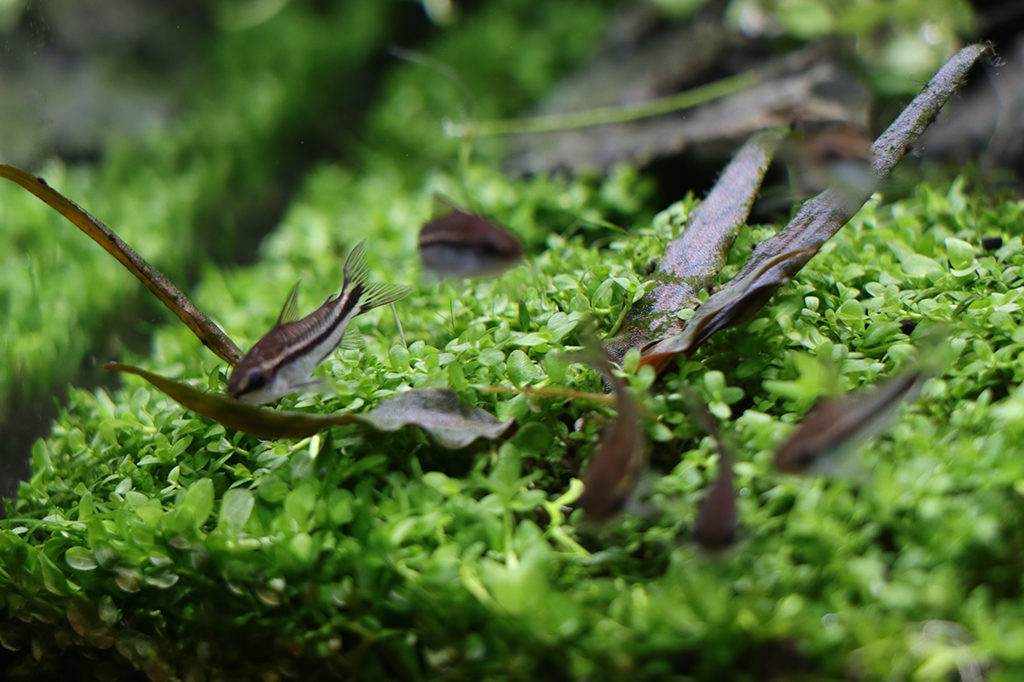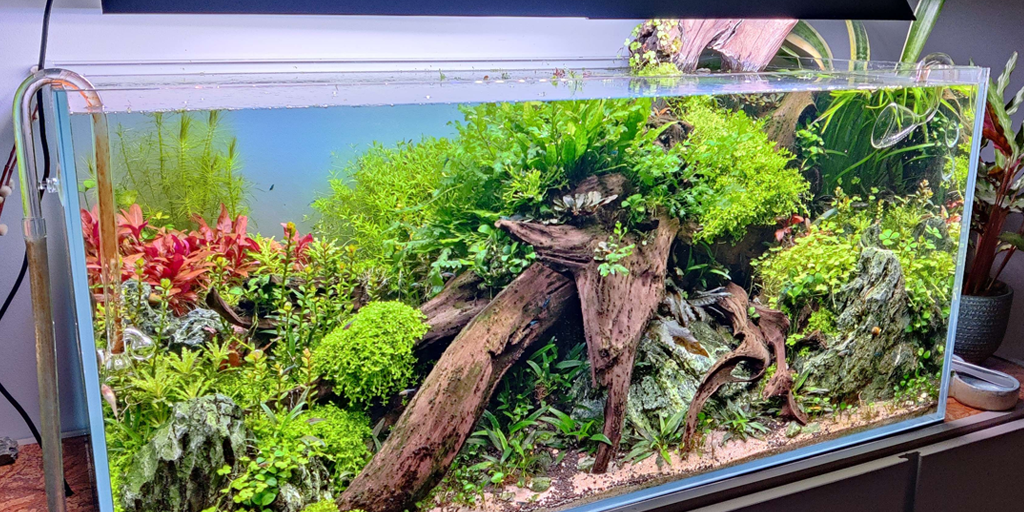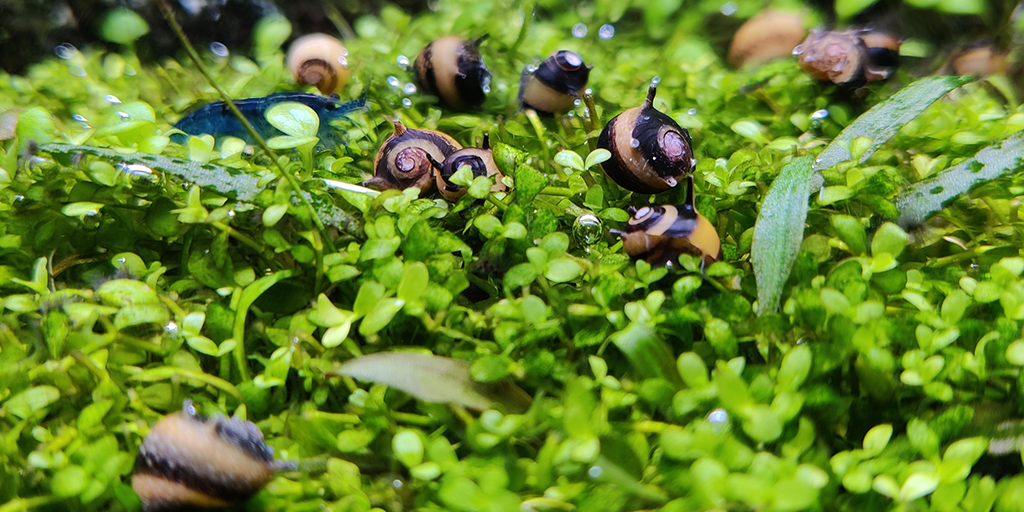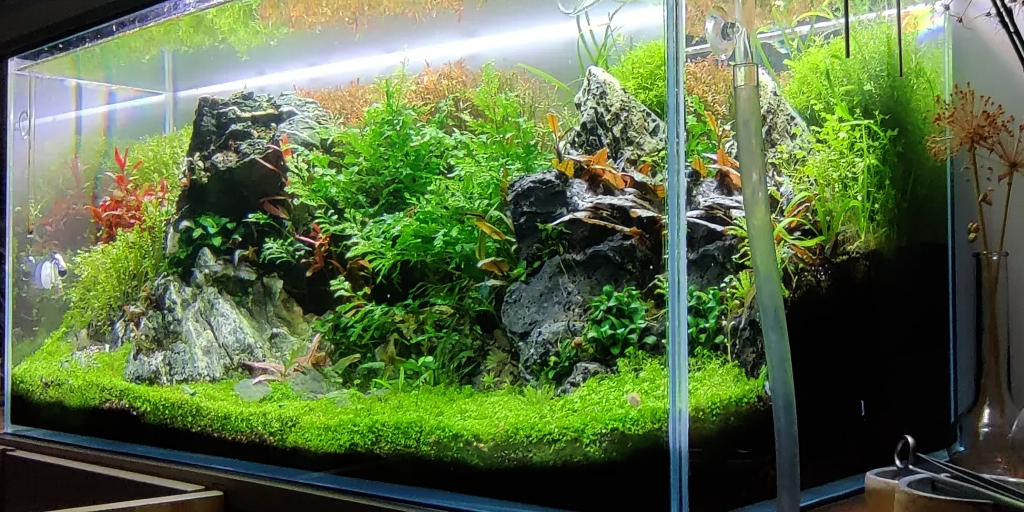Aquarium enthusiasts and aquascapers alike understand that creating and sustaining a thriving underwater ecosystem is an art form that requires both creativity and dedication. It’s essential to recognize that the beauty of an aquascape is not just in its initial creation but in the ongoing maintenance and care that keeps it vibrant and harmonious.

This is part 1 of the ‘maintenance and care’ series. Check out the other parts here:
Lighting
Lighting is essential for plant growth and to bring out the colors in your fish. Too much light can cause algae growth, while too little can hinder plant growth. Aim for a balance and consider using a timer to regulate the light cycle. Lighting plays a crucial role in an aquascape for several reasons:
- Photosynthesis: Aquatic plants, like all plants, require light to perform photosynthesis. This process allows plants to convert light energy into chemical energy, which is used to fuel the plant’s activities. Without sufficient light, plants cannot photosynthesize effectively, which can hinder their growth and health.
- Plant Growth: Different plants have different light requirements. Some plants require high light levels to grow properly, while others can survive with less light. Providing the right amount of light can ensure that all plants in your aquascape grow well.
- Color and Vibrancy: Proper lighting can enhance the colors of both plants and fish in your aquascape. It can bring out the vibrant greens of your plants and the vivid colors of your fish, making your aquascape more visually appealing.
- Circadian Rhythms: Light can help regulate the circadian rhythms of your fish and other aquatic animals. A consistent light/dark cycle can help your fish know when to be active and when to rest.
- Algae Control: While some light is necessary for plant growth, too much light can lead to excessive algae growth. Balancing the lighting in your aquascape can help control algae.

Algea Control
Algae is a common issue in aquascapes. Regular cleaning, balanced lighting, and adding algae-eating fish or shrimp can help control algae growth. Controlling algae in an aquascape is important for several reasons:
- Aesthetics: Algae can quickly cover the surfaces of your aquarium, including the glass, substrate, and decorations, which can detract from the overall appearance of your aquascape.
- Plant Health: Excessive algae can compete with your aquatic plants for nutrients and light, potentially hindering their growth and health.
- Water Quality: Some types of algae can negatively impact the water quality in your aquarium, which can affect the health of your fish and other aquatic inhabitants.
- Oxygen Levels: During the night, algae consume oxygen, which can lead to lower oxygen levels in your aquarium. In severe cases, this can be harmful to your fish.
- Balance: Algae outbreaks can be a sign of an imbalance in your aquarium, such as too much light or excess nutrients. Controlling algae helps maintain the overall balance of your aquascape.

Regular Testing
Regularly test the water for pH, ammonia, nitrite, and nitrate levels. This helps to detect any potential issues early and allows you to take corrective action. Regular testing of water parameters helps for several reasons:
- Detect Imbalances: Regular testing can help detect imbalances in the water parameters, such as pH, ammonia, nitrite, and nitrate levels. These imbalances can be harmful to both plants and fish if not addressed promptly.
- Prevent Health Issues: By detecting potential issues early, you can prevent health problems in your fish and plants. For example, high ammonia or nitrite levels can be toxic to fish, while incorrect pH levels can affect plant growth.
- Optimize Growth: Regular testing allows you to optimize the conditions for the growth of your plants and fish. For example, certain plants may require specific pH or hardness levels to thrive.
- Algae Control: Testing can also help with algae control. High nitrate or phosphate levels can lead to excessive algae growth. Regular testing can help you identify and address these issues before they become problematic.
- Water Change Decisions: Regular testing can inform your decisions about water changes. If the water parameters are off, it might indicate that a water change or other intervention is necessary.







Leave a Reply